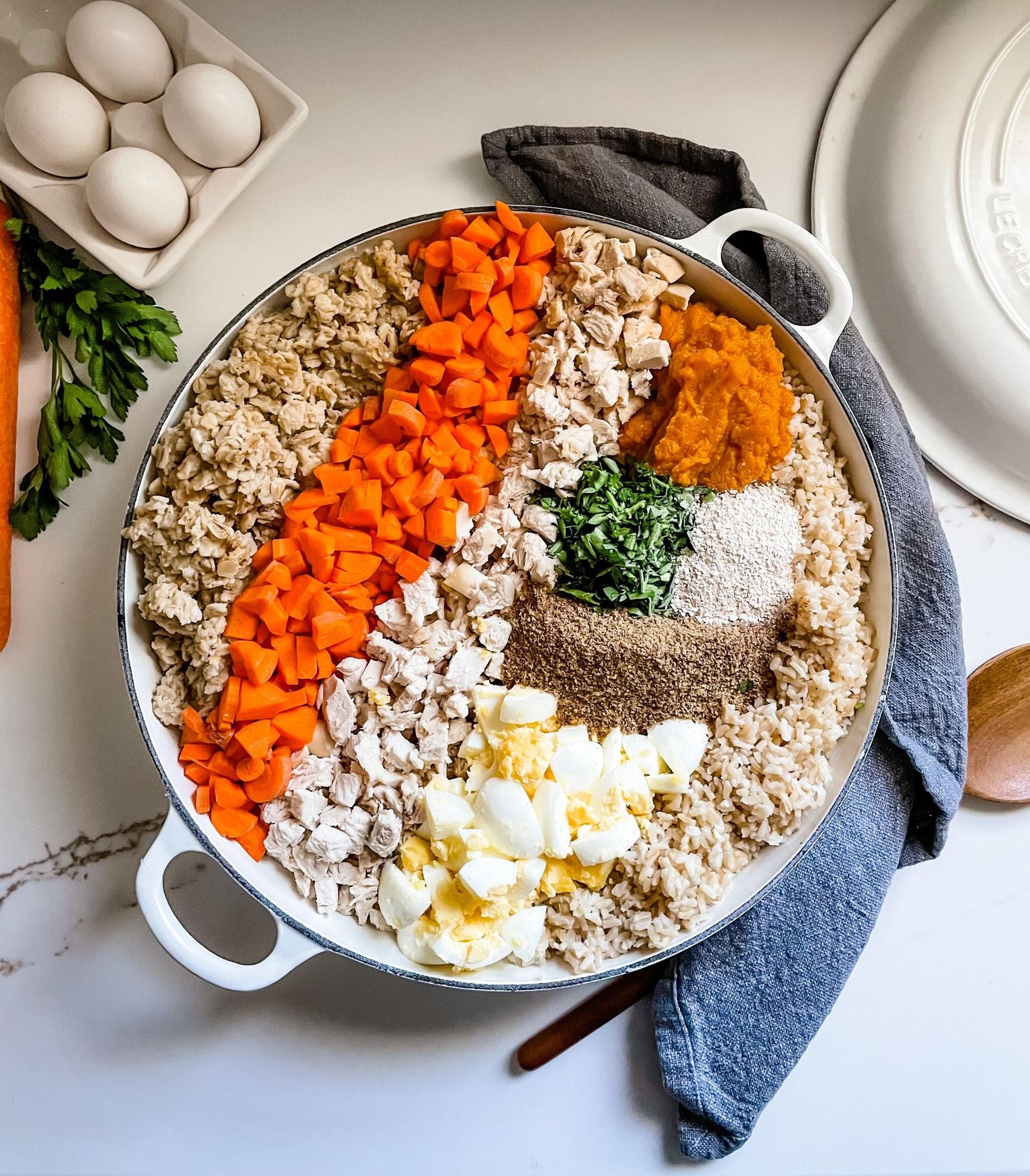Creating homemade dog food allows you to have complete control over the ingredients and nutrition your pet receives. It can be a healthier and more personalized option for dogs with specific dietary needs or preferences. In this article, we will discuss the benefits of homemade dog food, essential nutrients to include, and some simple recipes to get you started.

Benefits of Homemade Dog Food
Homemade dog food offers several advantages for pet owners and their furry friends:
Quality Control
When you make your own dog food, you know exactly what ingredients are included. This ensures that your dog gets high-quality, fresh, and nutritious food without harmful additives or fillers.
Customization
Homemade dog food allows you to tailor the diet to your dog’s specific needs, such as food allergies, sensitivities, or medical conditions. You can adjust the ingredients and portion sizes based on your dog’s age, weight, activity level, and health status.
Freshness
Homemade meals are typically fresher than commercial dog food, which often contains preservatives to extend shelf life. Fresh food can be more palatable and digestible for your dog.
Essential Nutrients for Homemade Dog Food
When preparing homemade dog food, it is crucial to include the following essential nutrients to ensure a balanced diet:
Protein
Protein is essential for muscle growth, tissue repair, and overall health. Include high-quality protein sources such as chicken, beef, turkey, fish, eggs, or lamb in your dog’s diet.
Carbohydrates
Carbohydrates provide energy and support digestive health. Opt for healthy carbohydrate sources like sweet potatoes, brown rice, quinoa, and oats.
Fats
Fats are necessary for energy, skin and coat health, and brain function. Include healthy fats like fish oil, flaxseed oil, and olive oil in your recipes.
Vitamins and Minerals
Ensure your dog gets essential vitamins and minerals by including a variety of vegetables and fruits such as carrots, spinach, blueberries, and apples. You may also need to add a vitamin and mineral supplement to ensure complete nutrition.
Calcium and Phosphorus
Calcium and phosphorus are crucial for strong bones and teeth. Include sources like dairy products, bone meal, or calcium supplements to meet your dog’s needs.
Simple Homemade Dog Food Recipes
Here are some easy and nutritious homemade dog food recipes to try:
Chicken and Vegetable Stew
Ingredients:
- 2 pounds boneless, skinless chicken breasts or thighs
- 1 cup chopped carrots
- 1 cup chopped sweet potatoes
- 1 cup chopped green beans
- 1/2 cup peas
- 4 cups water or low-sodium chicken broth
- 1 tablespoon olive oil
Instructions:
- Cut the chicken into bite-sized pieces.
- In a large pot, heat the olive oil over medium heat and add the chicken. Cook until browned.
- Add the carrots, sweet potatoes, green beans, and peas to the pot.
- Pour in the water or chicken broth and bring to a boil.
- Reduce the heat and simmer for 30-40 minutes, until the vegetables are tender.
- Let the stew cool before serving. Store leftovers in the refrigerator for up to 3 days.
Beef and Rice Dinner
Ingredients:
- 2 pounds ground beef
- 1 cup brown rice
- 1/2 cup chopped carrots
- 1/2 cup chopped spinach
- 1/2 cup peas
- 4 cups water or low-sodium beef broth
Instructions:
- In a large pot, cook the ground beef over medium heat until browned. Drain any excess fat.
- Add the brown rice, carrots, spinach, peas, and water or beef broth.
- Bring to a boil, then reduce the heat and simmer for 30-35 minutes, until the rice and vegetables are cooked.
- Let the mixture cool before serving. Store leftovers in the refrigerator for up to 3 days.
Feeding Guidelines
When feeding your dog homemade food, keep these guidelines in mind:
- Portion Control: Measure the food based on your dog’s weight, age, and activity level. Consult your veterinarian for specific portion recommendations.
- Gradual Transition: If switching from commercial food to homemade food, do so gradually to avoid digestive upset. Mix small amounts of homemade food with the old food and gradually increase the proportion of homemade food over a week.
- Monitor Health: Keep an eye on your dog’s health and weight. Adjust the recipe or portion size if necessary.
Conclusion
Homemade dog food can be a nutritious and customizable option for your pet. By including essential nutrients and using high-quality ingredients, you can ensure your dog enjoys a healthy and balanced diet. Always consult with your veterinarian to tailor the recipes to your dog’s specific needs and ensure complete nutrition.











